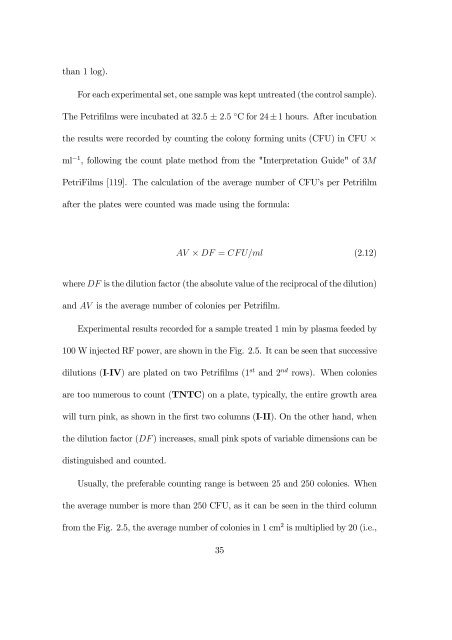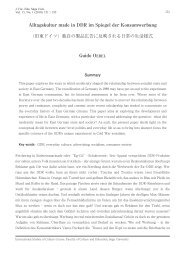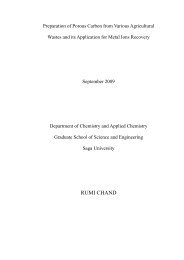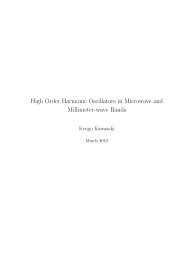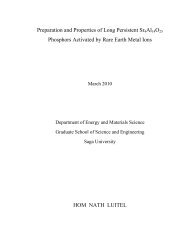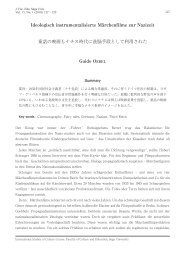ε (eV)
ε (eV)
ε (eV)
Create successful ePaper yourself
Turn your PDF publications into a flip-book with our unique Google optimized e-Paper software.
than 1 log).<br />
For each experimental set, one sample was kept untreated (the control sample).<br />
The Petrifilmswereincubatedat32.5 ± 2.5 ◦ Cfor24 ± 1 hours. After incubation<br />
the results were recorded by counting the colony forming units (CFU) in CFU ×<br />
ml −1 , following the count plate method from the "Interpretation Guide" of 3M<br />
PetriFilms [119]. The calculation of the average number of CFU’s per Petrifilm<br />
after the plates were counted was made using the formula:<br />
AV × DF = CFU/ml (2.12)<br />
where DF is the dilution factor (the absolute value of the reciprocal of the dilution)<br />
and AV is the average number of colonies per Petrifilm.<br />
Experimental results recorded for a sample treated 1 min by plasma feeded by<br />
100 W injected RF power, are shown in the Fig. 2.5. It can be seen that successive<br />
dilutions (I-IV) are plated on two Petrifilms (1 st and 2 nd rows). When colonies<br />
are too numerous to count (TNTC) on a plate, typically, the entire growth area<br />
will turn pink, as shown in the first two columns (I-II). On the other hand, when<br />
the dilution factor (DF) increases, small pink spots of variable dimensions can be<br />
distinguished and counted.<br />
Usually, the preferable counting range is between 25 and 250 colonies. When<br />
the average number is more than 250 CFU,asitcanbeseeninthethirdcolumn<br />
from the Fig. 2.5, the average number of colonies in 1 cm 2 is multiplied by 20 (i.e.,<br />
35


